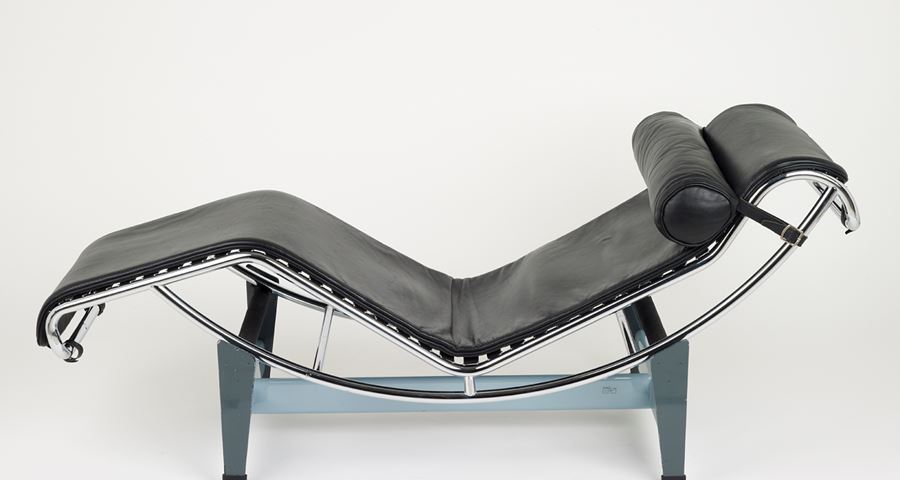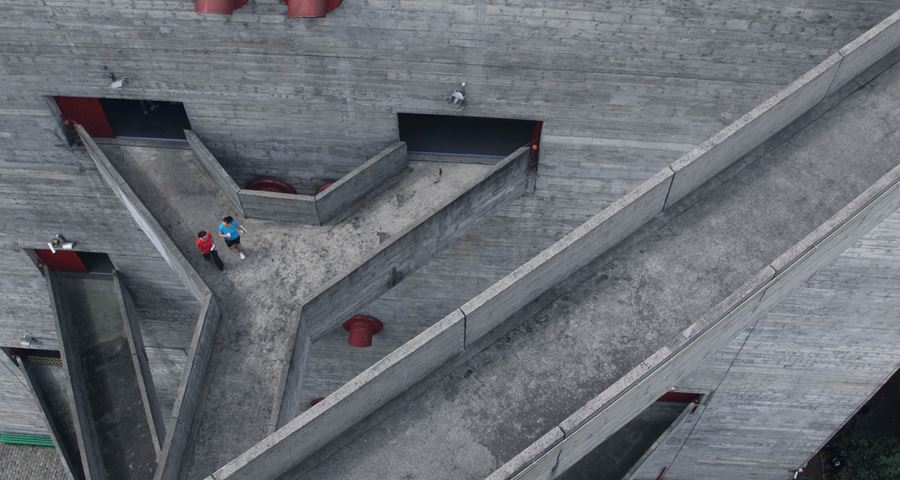Women in Design
Q&A with Zoë Berman
Ahead of the upcoming workshop, International Women’s Day: Wikipedia edit-a-thon on Sunday 8 March, the Design Museum caught up with Zoë Berman.
About Zoë Berman
Zoë Berman is an architect, University lecturer and the founder of Part W - an action group of industry professionals who work in the design and built environment sector. The group, established in 2018, runs a campaigning for gender equity in the industry. Their first collective campaign the Alternative List received significant press coverage and support.
Q: Why do you think online history records don’t always include women designers?
There is a cyclical issue at play here. The design work of women, commissioning work, influencing policy, driving forward design progression have consistently been overlooked in the awards systems, in what is featured in press and what is taught in design schools.
This has created a downward spiral of women's work being erased from history through lack of coverage. This has been happening for centuries. Women's work has been overlooked in printed material, and that imbalance has carried through into the digital world. The work of Part W seeks amongst other things to draw attention to this fact and we have campaigned to make people aware of this imbalance. Our Alternative List project drew attention to and celebrated some of the women who have been unvalued.
Q:When did you start working on Wikipedia edit-a-thon and why?
We've talked about a Wiki-thon for the Alternative List campaign, which we launched in 2019, for a while now. This invitation from the Design Museum connects up with the amazing Wiki work that has been done by Parlour, and it provides a perfect platform to start off a programme of filling the online gaps in information about brilliant women who through history have altered the course of design, construction and place making but have not been given the recognition they deserve.

Chaise Longue LC4 by Charlotte Perriand
Q: Having worked on this project for one year now, have you discovered any female designers who were probably underrated by critics of the time?
The Part W Alternative List campaign has seen 167 women through history, being brought to public attention. Though really that barely scratches the surface. Dr. Jane Hall, in researching her book Breaking Ground - Women in Architecture, noted that she had been selecting women to feature from over 700 suggestions. Some of these fabulous women on our Alternative List are more known than others. There are so many brilliant people to choose from and it's really hard to pick out just one.
There has been a renaissance of interest in the work of Lina Bo Bardi, and this is in part due to the grant that was offered by the British Council in 2016 to study her work and the associated exhibition put on by Assemble. Charlotte Perriand has been brought out of the shadows and her work given the spotlight that should have been shone decades ago. The extensive exhibition in Paris at The Foundation Louis Vuitton that ran for five months and closed last month, has brought about a significant interest in her work. What this all points to is the crucial role that curators, awarding bodies and funders have, in seeing women in the design sector being valued equally to men. Without the key figures in the cultural world making their programming and award-giving equitable, women will continue to be ignored.
Another example is the work of Yasmeen Lari, Pakistan's first female architect. Lari is finally getting the recognition she deserves and has been awarded the 2020 Jane Drew prize. She closed her own practice in 2000, having designed many of landmark modern commercial buildings in Pakistan. Since then she has become a UNESCO consultant in 2003 and has worked extensively in humanitarian architecture to alleviate the challenges of scarse resources and flood risk in housing, working with communities living in disaster prone areas of the country.
Q: Why do you think some designers are more recognised than others?
It comes down to value system. The design work of men has consistently been given more coverage than the work of women. The top international architecture awards have, through history, been granted almost entirely to men and when women are nominated, it has often been in partnership with their business partner husbands. The work of men has until recently received infinitely more press coverage. There are far more books written about the work of male architects than have been written about the work of women, and very few retrospective exhibitions have been dedicated to celebrating the work of female architects.
Those statements should too be looked at the through the lens of BAMErepresentation in our industry: minority groups are consistently ignored by the mainstream award-giving bodies, and those making curatorial decisions. The built works of women often doesn't get featured on the 'great works' lists, and maps. And the work being produced by women in the past has not sat easily within the parameters of traditional practice. Mainstream cultural institutions tend to celebrate the work of traditional architectural practitioners.
Female designers might work in a flexible, multi-disciplinary, some times part-time way. Also, their work might focus on social values rather than commercial work and that kind of work may be seen as 'fringe' and hasn't fit into the mould. I think there is now a boredom threshold about the 'same old' work being held up as exceptional. Imbalanced lists and non-diverse coverage is quite frankly getting boring and a bit dusty. A next generation of designers are looking for richer, more nuanced, non-traditional modes of practice, and they aren't finding rich examples of that in the annals of history.

SESC Pompéia LBB by architect Lina Bo Bardi, São Paulo, 1986
Q: What can be done to improve representation of women in design history?
There needs to be a fundamental reset of the way in which the work of women is assessed and valued. For centuries, the contribution of women to the built environment sector has been overlooked. Because it doesn't fit the standard model of what is considered to be influential or successful. So, the publishing houses need to re-think who they are publishing monographs and texts about; museums and galleries should be rethinking whose work is being celebrated in dedicated exhibitions; journalists and publications need to be aware of the impact that their work has in celebrating and drawing attention to selected architects, and so on.
Everyone working in this industry needs to ask themselves if they are doing enough, what they could do better. Without this, there is a downwards spiral. If your work isn't featured in press and celebrated in the public domain, then there's reduced chance of female-lead practices being commissioned to deliver projects, then fewer women will see a place for themselves in what is a male-dominated industry and won't feel welcome. It's all connected: recognition, visibility, retention in offices, value in staff pay, support to be successful in one's career, gaining commissions. All these threads are directly linked to one another.
Q: Have you uncovered any surprising facts about certain figures whilst working on the project?
We're currently fundraising for a brilliant series of mini films with women and men each talking on camera about amazing female designers. We'll be sharing facts and knowledge about certain figures in that series. We'd be delighted to hear from companies or individuals who could help make this project happen - potential sponsors can be in touch with us collective@part-w.com or donate via our Go Fund Me page
related event
Background image | Casa de Vidro by architect Lina Bo Bardi, São Paulo, 1951
Q: If you could invite two female designers to your dinner party (past or present) who would you choose?
Part W recently held an incredible FEAST event with key figures in the industry who are working in the sphere of addressing issues of diversity and instersectionality. It was an absolute blast and we look forward to having another one of those collective meals with influential figures again in the future. Looking to women of the past, there are so many to choose from but I'd have loved to share a meal with Minnette de Silva and Charlotte Perriand.